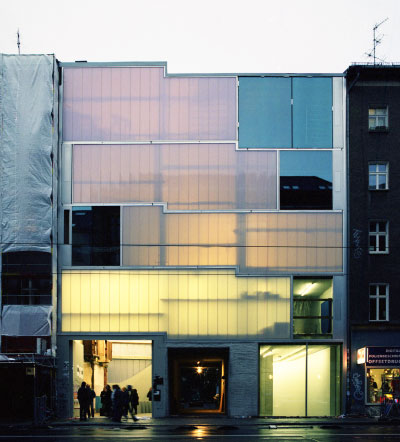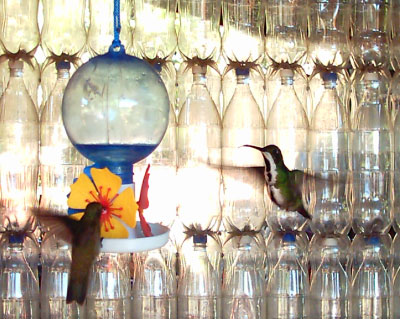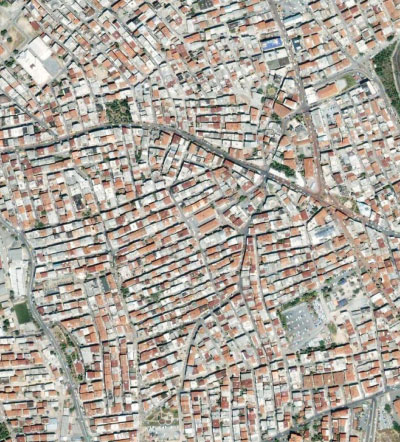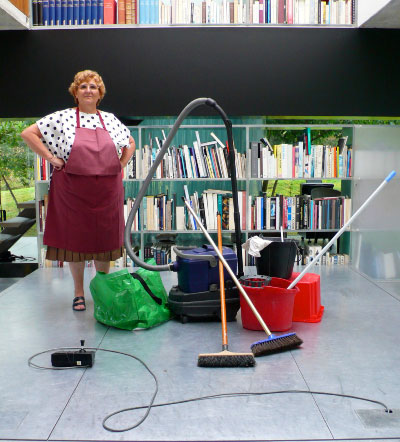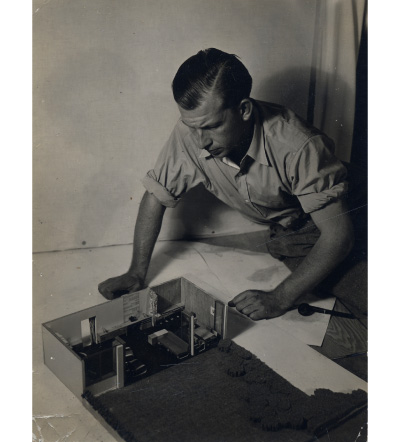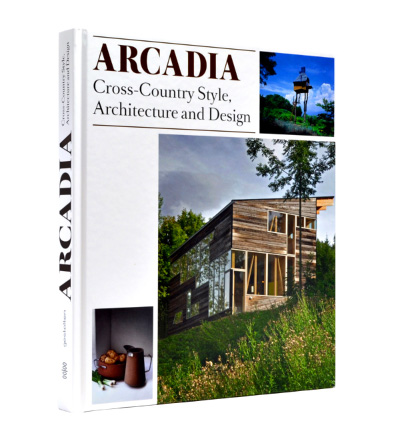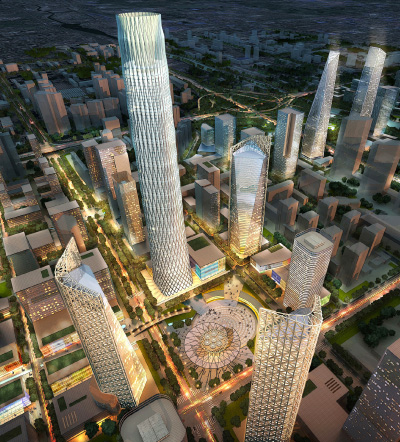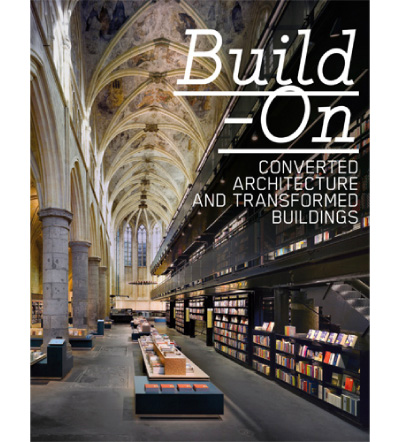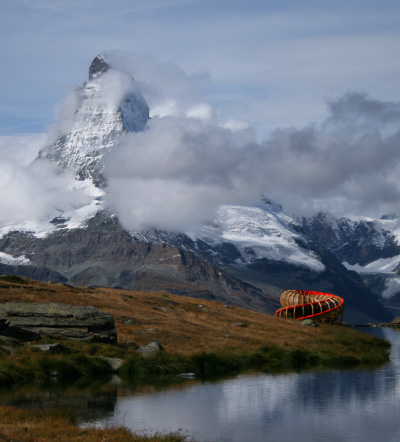
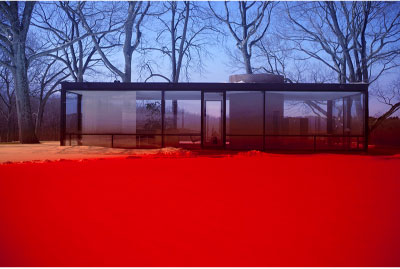
Courtesy Regen Projects, Los Angeles © James Welling

Our image of modern architecture is black and white, quite literally. It’s an image of black ribbon windows in white stucco walls, of slender steel columns behind clear panes of glass. James Welling’s contemporary photographs of architect Philip Johnson’s 1949 Glass House, on display now unitl March 6 at Regen Projects, richly confuse this image.
Welling has captured the house, a landmark of American modernism, with a digital camera and handheld lenses in a series of layered, intensely colored photographs. The prints in the show offer a view of the building that’s tactile, textured, and surprisingly tender.
Most canonical photographs of the house look on it orthogonally, so that its glass skin seems to disappear and its entire structure to dissolve into its manicured surroundings. Welling shoots slightly eccentric perspectives that take in more of the glass and the landscape, and complicates these views by layering them with fields of strong color. This treatment brings out the stubborn physicality of the building. Immense red and green sunspots mottle a glass wall. An orange-colored spill of light reveals the rough surface of an interior carpet.




 Facebook
Facebook Permalink
Permalink Digg
Digg Reddit
Reddit LinkedIn
LinkedIn StumbleUpon
StumbleUpon Tumblr
Tumblr
